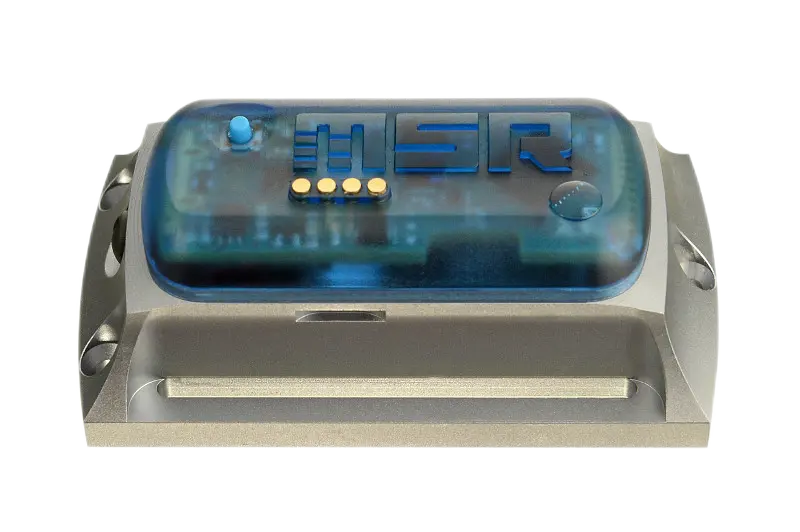
Enhancing process watching with Picanet together AR智能眼鏡 with CAN XL technology
The increasing sophistication of modern manufacturing automation architectures calls for robust oversight and diagnostic instruments. Utilizing Picanet, a pioneering communication protocol designed distinctly for industrial conditions, joined with the expanded capabilities of CAN XL, yields a potent solution for on-demand framework visibility. CAN XL's amplified speed and connectivity enable seamless integration with Picanet networks, providing efficient broadcasting of indispensable operational data. This article considers the favorable points of implementing Picanet monitoring with CAN XL in manufacturing automation applications, spotlighting its importance on system stability.
- As well, this method supports anticipatory maintenance by delivering valuable comprehension into system health and upcoming issues preceding they magnify.
- The elasticity of Picanet, alongside CAN XL's extended capabilities, turns it an excellent solution for a large-scale spectrum of automatic control systems implementations.
Integrating Vuzix Smart Glasses for Remote Surveillance
Vuzix smart glasses are quickly emerging a useful resource in the realm of remote surveillance. These modern devices empower personnel to survey live visuals from diverse locations, delivering a hands-free and engaging vision. With their compact design and easy-to-use user experience, Vuzix smart glasses support swift remote monitoring tasks.
- What's more, Vuzix smart glasses can be integrated with existing surveillance systems, granting for a coherent workflow.
- The association augments situational awareness by equipping workers with a full understanding of the tracked environment.
The multi-functionality of Vuzix smart glasses prepares them for a extensive series of uses, including inspective duties, site assessments, and emergency response. As upgrading continues to mature, we can foresee even greater uses for Vuzix smart glasses in the area of remote surveillance.
Crafting and Installing CAN Relay Control Solutions
This article delves into the architecture and application of a tough CAN-based relay control system. Capitalizing on the specifications of the Controller Area Network (CAN), this system facilitates synchronous communication between a main controller and localized relay modules. The plan incorporates innovative procedures to ensure rigorous control of the relays, improving system performance. As well, this apparatus demonstrates the good points of CAN technology in engineering applications, where consistent control is paramount.
- Such system features a central controller, relay modules, and a CAN bus.
- CAN offers a pooled communication channel for the processor to oversee relay states.
- That software environment is engineered to orchestrate data exchange between the controller and relay modules.
Application of this system incorporates electronic design, software development, and architecture integration. Extensive testing is undertaken to verify the functionality and dependability of the system under numerous operating conditions.
Real-Time Relay Status Monitoring using PCAN Interfaces
Adopting PCAN interfaces contributes a robust solution for continuous monitoring of relay status within automated manufacturing and control systems. These rapid communication interfaces grant seamless data transfer between PLCs, microcontrollers, and host computers, empowering constant observation of relay activation states. The ability to track relay behavior in real time gives invaluable insights into system performance, supporting instant response to potential issues or malfunctions.
- PCAN interfaces provide a trustworthy platform for real-time data acquisition from relays.
- Real-time monitoring of relay status promotes efficient troubleshooting and maintenance.
- Also, PCAN interfaces assist high data transfer rates, upholding accurate and timely relay status updates.
Advanced CAN Bus Data Visualization Using Vuzix XR
Unlocking the potential of real-time automotive diagnostics and analysis has become more crucial in today's connected world. Vuzix XR smart glasses afford an innovative platform for visualizing comprehensive CAN bus data, granting engineers and technicians a hands-free, immersive insight into vehicle systems. Through advanced rendering techniques, critical parameters such as speed, temperature, and fuel levels are presented in a evident and precise manner, overlaid onto the user's viewing area. This groundbreaking strategy empowers technicians to instantly identify anomalies, diagnose issues promptly, and ultimately streamline maintenance procedures.
- The combination of Vuzix XR's augmented reality capabilities with comprehensive CAN bus data fusion offers a transformative solution for the automotive industry.
- By leveraging ongoing data streams, engineers can monitor vehicle performance with superior resolution, gaining valuable understanding that drives innovation and efficiency.
- The hands-free nature of Vuzix XR grants technicians to smoothly work on vehicles while simultaneously accessing critical information, increasing productivity and safety.
Utilizing CAN XL for Remote Relay Management
CAN XL's extended data frame length presents a robust platform for extended accessing and controlling relays. This article explores the execution of utilizing CAN XL for relay management, illustrating its strengths. By employing the CAN XL protocol's features, users can unobstructedly monitor and manage relay states from a remote location. This approach offers elevated system agility and lessens the need for physical access with relays.
- In addition, CAN XL's inherent hardiness ensures dependable communication even in rigorous environments.
- Because of this, domains such as automated processes can exploit CAN XL to build more autonomous and self-regulating systems.
Predictive Relay Maintenance Through CAN XL and AI Algorithms
In the rapidly evolving automated world of industrial operations, assuring the reliability and uptime of essential equipment is necessary. Relay systems, essential components in many automation setups, are prone to wear and tear over time, reasonably leading to failures and costly downtime. To reduce these risks, adopting predictive maintenance strategies has become vital. CAN XL, a high-speed, robust communication protocol, furnishes a suitable platform for gathering real-time data from relay systems. By making use of the capabilities of Machine Learning algorithms, this data can be interpreted to discover patterns and foresee potential failures before they happen.
- Machine Learning models can be trained on historical data from relay systems to develop benchmarks for normal operation.
- Real-time data collected via CAN XL can then be compared against these baselines, allowing the detection of deviations that may indicate impending failures.
- By reviewing this information, predictive maintenance systems can send alerts to technicians, enabling timely intervention and stopping costly downtime.
Urban System Monitoring Employing Picanet and CAN XL
Innovative networked urban environments are more and more reliant on robust and efficient infrastructure monitoring systems. To meet this intensifying need, innovative technologies like Picanet and CAN XL are advancing as promising solutions. Picanet's separated architecture yields seamless data communication across a wide range, while CAN XL offers greater bandwidth and longer connectivity distances. By merging these technologies, cities can achieve real-time oversight of critical infrastructure assets such as traffic flow, energy grids, and environmental sensors. This integrated approach increases smarter decision-making, upgrades workflow productivity, and ultimately elevates the liveability of urban residents.
Advanced AR Relay Inspections Using Vuzix Devices
Vuzix's groundbreaking augmented reality (AR) devices introduce a breakthrough approach to industrial relay inspections. By overlaying simulated insights onto the physical world, technicians can effectively assess relay portions for wear and tear, spotting potential problems. This remote inspection method raises technician output, limiting downtime and optimizing overall protection on the job site.
- What's more, Vuzix AR devices make possible real-time collaboration between technicians and engineers, promoting expedited diagnosis.
- Therefore, Vuzix AR simplifies the relay inspection process, resulting in a more dependable and financially beneficial technique.
Optimizing Relay Functionality through Live CAN Data Evaluation
Accomplishing optimal transmitter performance within complex systems often requires comprehensive monitoring of real-time data. Controller Area Network (CAN) provides a durable platform for assembling this critical information, granting in-depth insights into relay behavior and system efficiency. By employing real-time CAN data scrutiny, engineers can spot potential issues, boost relay settings for optimal output, and ultimately advance the overall reliability and performance of the system.
- Real-time CAN data analysis delivers a valuable tool for identifying irregularities in relay behavior.
- Implementing real-time monitoring systems can significantly raise system troubleshooting.
- By analyzing CAN data, engineers can evaluate relay performance metrics such as response time.
Safe Transmission Protocols in Relay Networks
Relay control networks depend on secure communication protocols to protect the integrity and confidentiality of transmitted data. These protocols provide reliable networking between relay nodes and central controllers, defending against unauthorized access, distortion, and eavesdropping. Implementing robust protocols such as TLS/SSL is critical for maintaining the security and reliability of these networks. This upholds efficient and safe operation in critical applications spanning industrial automation to smart grids.
